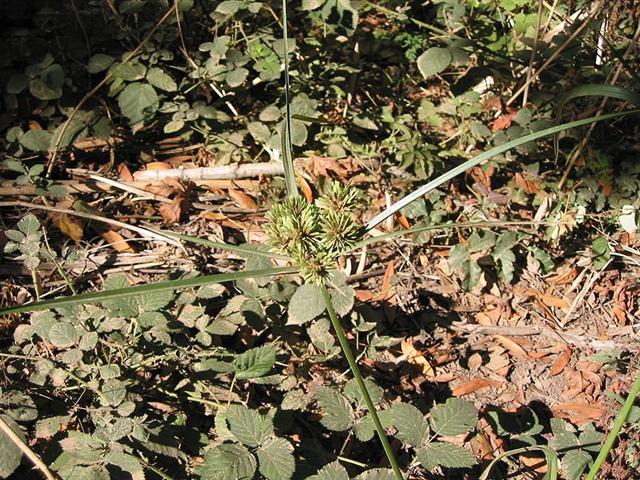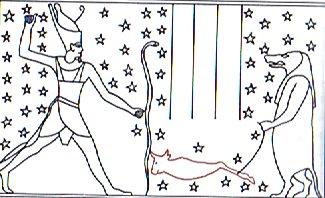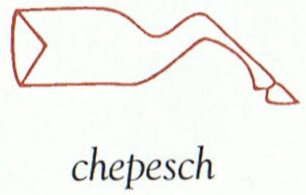|
TRANSLATIONS
The link 'the single leg used at
the end of the year' leads to the following pages:
|
It cannot be
avoided. Although this 'chapter' in my glyph dictionary is by far
the longest of them all (at least so far), I have to throw
'astrological mythology' into the stew. All myths are about time, it
is stated in Hamlet's Mill, and I agree. Before astronomy (the age
of the telescope) the events in time were summarized by myth using
the dome of the sky as a frame of reference.
Thus, the oldest
known story, about Gilgamesh and Enkidu, his hairy
companion, must be read as 'astrological myth'. I imagine
Gilgamesh as the one who 'kindles, gilg, the sun, (sh)amash,'
an event which takes place at the end of autumn, and Enkidu
surely represents the wild and hairy spring 'animal'.
"Without
taking part in the heated discussion on the interpretation of the
very name Gilgamesh - dGIS.GIN.MEZ/MAS, and other forms - one can
mention that GIS means 'wood, tree', and MEZ/MAS a particular kind
of wood, and that there are reasons for understanding our hero as a
true Prometheus." (Hamlet's Mill)
I have earlier
quoted at length from Hamlet's Mill in order to put the kava
drink in a greater mythological context. We can begin the discussion
about 'the single leg' by reiterating a key event:
...
Ishtar, scorned, goes up to heaven in a rage, and extracts from
Anu the promise that he will send down the Bull of Heaven to
avenge her. The Bull descends, awesome to behold. With his first
snort he downs a hundred warriors. But the two heroes tackle him.
Enkidu takes hold of him by the tail, so that Gilgamesh
as espada can come in between the horns for the kill. The
artisans of the town admire the size of those horns: 'thirty pounds
was their content of lapis lazuli'. (Lapis lazuli is
the color sacred to Styx, as we have seen. In Mexico it is
turquoise.)
Ishtar
appears on the walls of Uruk and curses the two heroes who
have shamed her, but Enkidu tears out the right thigh of the
Bull of Heaven and flings it in her face, amidst brutal taunts. It
seems to be part of established procedure in those circles.
Susanowo did the same to the sun-goddess Amaterasu ...
The 'right thigh'
of Taurus (as I dare to interpret the Bull of Heaven) corresponds, I
think, to the first half of summer, the period which once was
inaugurated by Taurus at spring equinox (north of the equator).
Furthermore, if
the 'right thigh' was cut off and thrown into the face of Ishtar,
then it ought to symbolize the end of spring. No more happy days
with plenty of offspring.
The 'tail' of the
Bull was taken hold of by Enkidu, which ought to mean that the event
should be
located at the back side of the Bull (on side b). Here we have the 3rd
variety of 'tail'. We have seen fish tails and bird tails, but no
earth grazer's tail. Unless we count the 'tail of the rat' (hiki
kioe):

|
|
There was a
curious habit on Easter Island, where someone who had yet to take
revenge of some past offense had a rat in his mouth - presumably with only its
tail hanging outside visible to the world (in order to declare that
the business was unfinished):
"Rats were
taboo as food for the island king and perhaps for the aristocratic
Miru in general, probably because the rat was believed to be
the incarnation of the spirit (kuhane) of the dead Hotu
Matua. On the other hand, women were permitted to eat rats.
One more reason why rats
were valued was because the sinews of their tails were used by
medicine men to sew up wounds. Finally, in the realm of beliefs, the
rat figured in the heva cusom. If a
kinsman had been murdered and the murderer was still at large, the
avenger, in a state of rage, took a rat between his teeth and began
to search for the murderer. Only when he had found out the name of
the murderer did he let the rat, which by that time might be in a
state of decomposition, fall to the ground and went and avenged the
killing (HM:438-439)." (Barthel 2)
The Rat =
Kuhane of Hotu Matua (the Sun King) is apparently the
Easter Island equivalent of The Heavenly Bull (Taurus) and during spring he
will be
responsible for the powerful growth:
 |
 |
 |
 |
 |
|
Ga2-25 |
Ga2-26 |
Ga2-27 |
Ga2-28 |
Ga2-29 |
 |
 |
 |
 |
 |
|
Ga3-1 |
Ga3-2 |
Ga3-3 |
Ga3-4 |
Ga3-5 (65) |
65 is counted from
Gb8-30. In Tahua the corresponding pair of glyphs could be
Aa2-39--40:
 |
 |
 |
 |
 |
|
Aa2-28 |
Aa2-29 |
Aa2-30 |
Aa2-31 |
Aa2-32 |
 |
 |
 |
 |
 |
 |
|
Aa2-33 |
Aa2-34 |
Aa2-35 |
Aa2-36 |
Aa2-37 |
Aa2-38 |
 |
 |
 |
 |
 |
|
Aa2-39 |
Aa2-40 (130) |
Aa2-41 |
Aa2-42 |
Aa2-43 |
 |
 |
 |
 |
 |
|
Aa2-44 |
Aa2-45 |
Aa2-46 |
Aa2-47 |
Aa2-48 |
Aa2-39 is a glyph
which I once thought depicted one of the great stone statues (moai)
and I classified it as a variant of the glyph type ure.
... carvers from
Hotu Iti (eastern sector) journeyed to the western sector to
seek the advice of a master carver. They were perplexed about how to
resolve the difficult problem of carving the statue neck. He advised
them to seek the answer by viewing their own bodies. They did so,
and discovered that the model for the statue neck was the penis (ure)
...
Ure Honu
is the reincarnation of Hotu Matua and his Kuhane
(the Rat) helped him to find the skull. The Thigh (Meschetiu) was in
ancient Egypt the name for Ursa Major:

Though according
to Wilkinson (who has furnished us with this picture) it was the
front leg of a bull, not a hind leg (at least so at the time of the
Middle Kingdom). With Ursa Major partaking in the process of
generating a new year the head (skull) of the bull should be in the picture,
I think. It is a time opposite to the 'tail'.
Wilkinson explains
that the constellation was the front leg of Seth, which Horus had
torn loose and thrown up into the sky. The hieroglyph for the front
leg of a bull (chepesch) was used to symbolize 'a strong
arm':

Furthermore,
chepesch was used in ceremonies when statues were raised up and
also in front of a mummy when it was placed in the grave. This type
of ceremony was called 'Opening of the Mouth'.
The statues on
Easter Island were 'sky-proppers', van Tilburg has suggested. And
vaha mea apparently means the open mouth which symbolizes the
red opening of a new year:
 |
 |
 |
 |
 |
|
Ga1-1 |
Ga1-2 |
Ga1-3 |
Ga1-4 |
Ga1-5 |
A moai is
like a 'strong arm' (singular) capable of propping up the sky dome.
Picture language is universal and the snake connecting thumb and
bull's horn is like a kava sign, while the 3 vertical 'beams'
look like those in Aa1-66:
|
|
To open the
mouth (of a fish, vaha mea) or the beak (of a bird, moa) at
the break of 'dawn' is a way to stay in tune with the horizon in the
east opening up to let the sun come out again.
|
 |
 |
|
vaha mea |
moa |
If the mouth / the
beak is closed it is dark and sun is not present:
 |
 |
|
Aa1-68 |
Ab8-10 |
When the ancient
Egyptians raised their statues the ceremony was called the Opening of the
Mouth. At the opposite end we find the idea of breaking the staff,
Hatinga Te Kohe, at 12 * 29.5 = day 354. If the 'sky propper'
is breaking, then the sky roof will come down upon us like a black
cloth.
Though to break
the silence is to open the mouth and be a part in the game of life
again. It is the female sign of life, whereas the male sign of life
is his 'staff' moving upwards. We can see it in the moa
prototype. We are not amused, said Queen Victoria.
"Now Susanowo was banished from the sky for having thrown the hind
part of this backward-flayed piebald stallion in the weaving hall of
his sister Amaterasu. These sudden discourteous gestures seem to be
part of the code: Enkidu had thus thrown the hind quarter of the
Bull of Heaven in the face of Ishtar, but here there is an
additional code feature (it is code) of the backward-flayed animal.
Susanowo's gesture caused the Sun-lady to withdraw in anger into a
cave: the world was plunged into darkness. The 80,000 gods assembled
in the Milky Way to take counsel, and at last came upon a device to
coax the Sun out of the cave and end the great blackout. It was a
low-comedy trick, part of the stock-in-trade that is used to coax Rā
in Egypt, Demeter in Greece (the so-called Demeter Agelastos or
Unlaughing Demeter) and Skadi in the North - obviously another
code-device.
The obscene dance of old Baubo, also called Iambe in Eleusis,
parallels the equally unsavory comic act of Loke in the Edda. The
point in all cases is that the deities must be made to laugh
..." (Hamlet's Mill)
I would rather say
that the point is to entice the deities to 'come out in the open' by
way of opening their
mouths. This will cause them to move. In the Eskimo myth about the
Entrail Snatcher (mummies have no intestines) a ridiculous dance is also used:
... Finally, at one time,
he could really be heard to enter to them, he, the poor cousin
of the Moon, the entrail-snatcher, carrying a dish and a large
knife, in order to try to snatch the entrails of the human
being. And look! At the window his wife stood and kept on
saying: 'She smiles!' The entrail-snatcher began to dance a drum
dance, with ridiculous movements, and they only looked at him,
while he sang: My little dogs, I get them food, / My little
dogs, I get them food, / ha-ahing, ha-ahing, ha-ahing.
While he acted thus, his
poor wife all along stood at the window saying: 'She smiles, she
smiles, she smiles!' She was tremendously busy telling her
husband that she smiled. At last she could hardly let be smiling
when looking at him, but she placed her hands under the front
part of her fur coat and blew violently, as the Moon had told
her to do. And indeed he took himself off, the entrail-snatcher,
over there, saying: 'One with blubber (i.e., a bear) is
heard!...
The poor wife stays at the window (it is underlined), i.e. at
the opening.
To stay unmoved the woman hides her hands (not to let them be engaged in any
dangerous business). And by blowing violently she established a
further security, connecting herself with a later time, when the neck
of the King has been broken and the torrents have been let loose:
... Pure O
picked up a large round stone (pureva) and hit the top of
the figure. Because of the stone, the neck of Oto Uta was
broken.Then the wind started blowing, the billow rose, the waves
broke, the rain started falling, the flame (i.e., lightning)
shone brightly, and the thunder rolled. As soon as the wind
started blowing, the waves broke, the rain fell, and thunder
rolled, King Hotu knew that Pure O had done harm
to Oto Uta ...
|
And at last the summary page:
|
A tail means the
end, and vaero is a picture of a tail. Although vaero
means the tail of a bird it is often used in rongorongo for
the sign at the end of a fish or as the whole fish:
At the
end of a season a new season must begin, which could explain why
vaero is also a word for the antenna of a lobster (vaero ura)
or for a head ornament (hauvaero).
By
way of a thorough investigation of the beginning of side a of
Tahua it has been possible to identify a structure which
evidently depicts how sun light during a period is totally absent (in the 'primal
embrace' between heaven and earth):
|
|